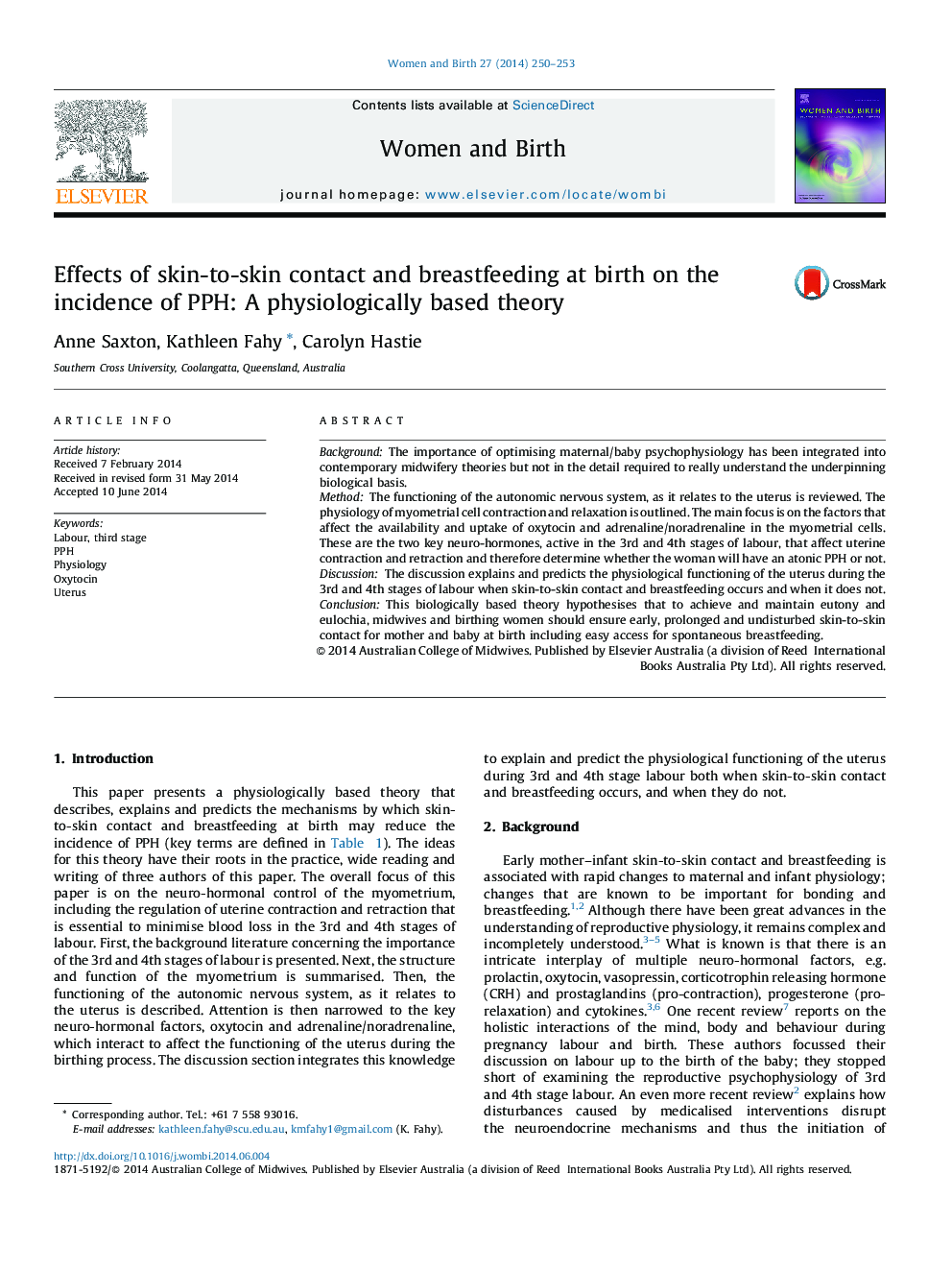| Article ID | Journal | Published Year | Pages | File Type |
|---|---|---|---|---|
| 2635995 | Women and Birth | 2014 | 4 Pages |
BackgroundThe importance of optimising maternal/baby psychophysiology has been integrated into contemporary midwifery theories but not in the detail required to really understand the underpinning biological basis.MethodThe functioning of the autonomic nervous system, as it relates to the uterus is reviewed. The physiology of myometrial cell contraction and relaxation is outlined. The main focus is on the factors that affect the availability and uptake of oxytocin and adrenaline/noradrenaline in the myometrial cells. These are the two key neuro-hormones, active in the 3rd and 4th stages of labour, that affect uterine contraction and retraction and therefore determine whether the woman will have an atonic PPH or not.DiscussionThe discussion explains and predicts the physiological functioning of the uterus during the 3rd and 4th stages of labour when skin-to-skin contact and breastfeeding occurs and when it does not.ConclusionThis biologically based theory hypothesises that to achieve and maintain eutony and eulochia, midwives and birthing women should ensure early, prolonged and undisturbed skin-to-skin contact for mother and baby at birth including easy access for spontaneous breastfeeding.
